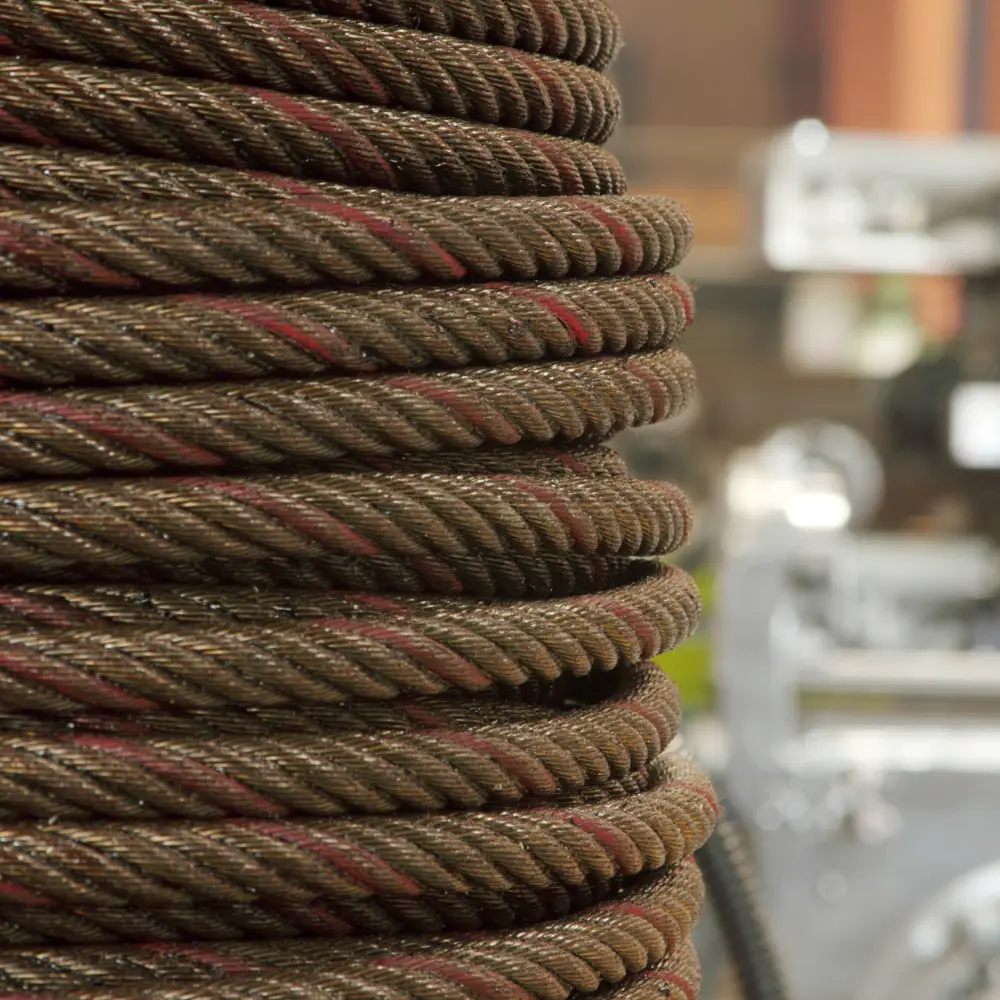 Wire rope slings are indispensable in various industrial operations, offering flexibility, strength, and reliability for lifting and moving heavy loads. However, their durability and performance can be significantly compromised if not properly stored and maintained. Understanding the correct storage procedures for wire rope slings can help extend their service life, ensuring safety and efficiency in operations.
Wire rope slings are indispensable in various industrial operations, offering flexibility, strength, and reliability for lifting and moving heavy loads. However, their durability and performance can be significantly compromised if not properly stored and maintained. Understanding the correct storage procedures for wire rope slings can help extend their service life, ensuring safety and efficiency in operations.
How to Store Wire Rope Slings
· Proper Storage Environment: To maximize the lifespan of wire rope slings, storing them in an environment that safeguards against potential damage is crucial. Key considerations include:
o Avoid Exposure to Damaging Elements: Store slings in a location protected from water, extreme temperatures, corrosives, and any liquids or sprays that could induce corrosion or damage.
o Prevent Kinking: Ensure slings are not stored in a manner that could cause kinks. A kinked wire rope sling can weaken the rope's structural integrity, leading to potential failure during use.
· Storage Practices
o Utilize a Rack: Wire rope slings should be stored on a rack when not in use. This prevents them from lying on the ground where they can be stepped on, run over, or otherwise damaged. Custom racks can accommodate slings of any size, promoting organization and ease of access.
o Avoid Storing Under Loads: Slings should never be left beneath loads or in areas where ongoing operations or environmental conditions can damage them.
· Lubrication and Corrosion Prevention
o Initial Lubrication: Wire rope slings are lubricated during manufacture, typically under normal usage conditions. However, additional measures may be necessary depending on the storage environment.
o Additional Lubrication: If stored outdoors or in environments conducive to corrosion, apply additional lubrication to protect against rusting. Use the same type of lubricant as the manufacturer to ensure compatibility and effectiveness.
· Temperature Considerations
o Temperature Limits: The storage temperature is vital for maintaining the sling's integrity. Generally, steel-cored slings should not be used or stored at temperatures above 400° F or below –40° F, as extreme temperatures can alter the material properties of the steel, affecting its performance and safety.
Regular Inspection and Maintenance
Even with proper storage, regular inspection and maintenance are crucial. Before use, slings should be inspected for any signs of wear, damage, or corrosion that could compromise their integrity. Any suspicion regarding the condition of a sling warrants immediate removal from service until a thorough inspection can be conducted.
Proper Storage Equals a Long, Healthy Lifespan
Adhering to these storage tips can significantly enhance the lifespan and reliability of wire rope slings. Proper care contributes to the safety of operations and the cost-effectiveness of equipment management by reducing the need for frequent replacements.
Related Reading